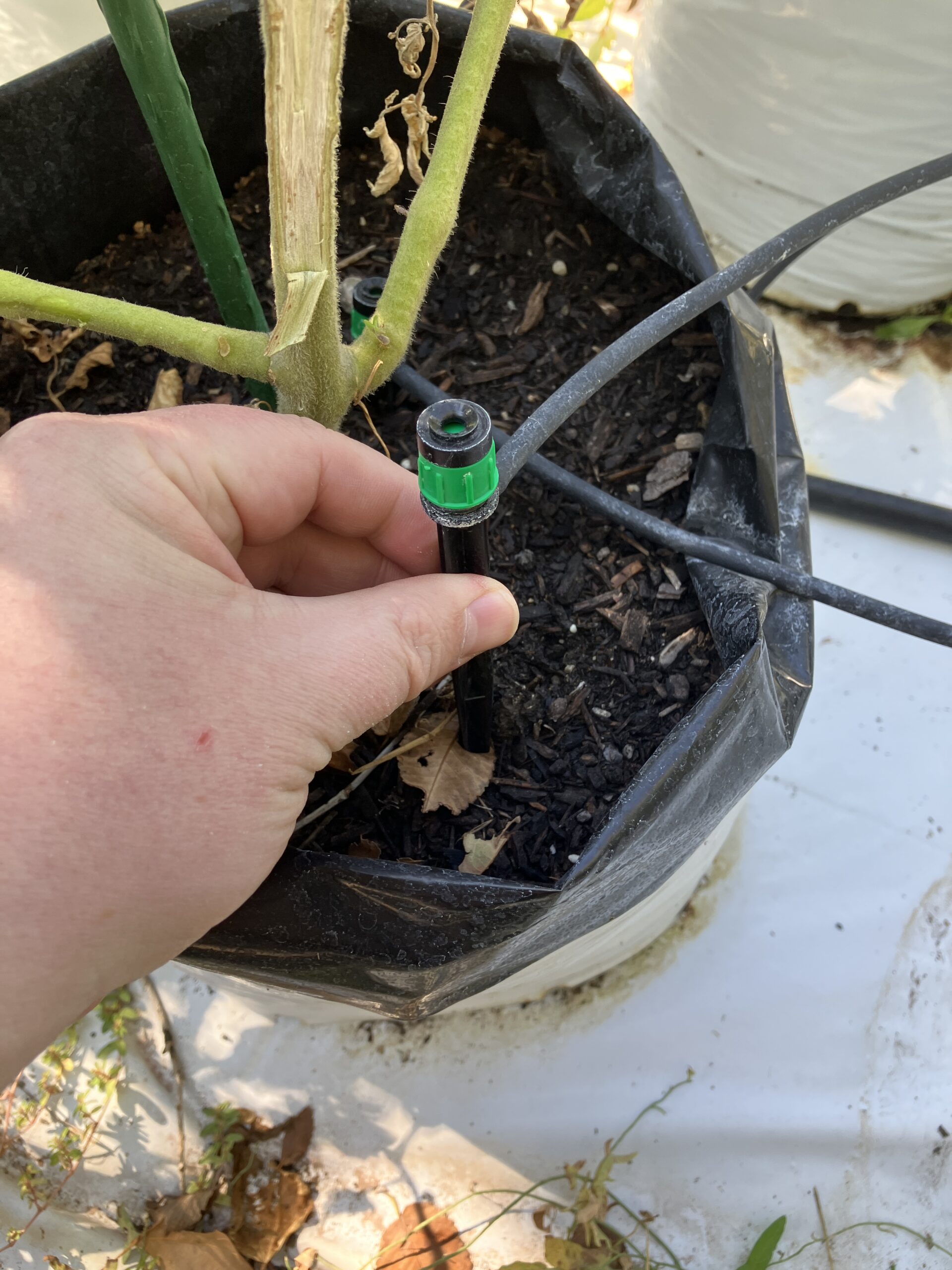10.3 Replacing Parts

10.3 Replacing Parts
Drip Line System Components
Main Line Replacement
- Inspect main lines annually for cracks, leaks, or UV damage
- Replace main lines showing signs of brittleness or repeated leaks
- When replacing, cut clean sections with sharp tubing cutters
- Install new sections using appropriate fittings
- Test connections under pressure before burying or covering
Emitter Maintenance and Replacement
- Clean clogged emitters first with vinegar solution or cleaning pins
- Replace emitters showing inconsistent flow or damage
- Match flow rates when replacing individual emitters
- Keep spare emitters on hand for quick replacements
Grow Bag Replacement
When to Replace
- Inspect bags for damage after each growing season
- Replace bags showing:
- Tears or punctures larger than 1 inch
- Significant UV degradation
- Collapsed or compromised drainage
- Severe soil contamination, moss or fungal
Replacement Process
- Wait for plants to complete their growing cycle if possible
- Carefully remove existing plants and salvage reusable soil
- Sanitize any stakes or supports being transferred
- Install new bag with fresh or amended soil mix
- Transfer plant support systems to new bag
- Adjust irrigation components as needed
Timer and Battery Systems
Battery Replacement
- Replace timer batteries annually before growing season
- Use high-quality alkaline or lithium batteries
- Keep spare batteries in stock during growing season
- Clean battery contacts during replacement
- Test system operation after battery change
- Document battery replacement date
Timer Unit Replacement
- Replace entire timer unit if:
- Display becomes unreadable
- Buttons malfunction
- Programming becomes unreliable
- Housing is damaged/water intrusion occurs
- Transfer existing programming to new unit if possible
- Test new timer thoroughly before relying on automatic operation
Support System Components
Stakes and Trellises
- Replace wood or bamboo stakes showing rot or splitting
- Check metal supports for rust or bending
- Replace damaged plant ties or twine
- Upgrade to stronger supports as plants mature
- Consider rust-resistant materials for replacements
Connection Points
- Replace cracked or damaged connectors immediately
- Update compression fittings showing wear
- Replace worn gaskets in quick-connect fittings
- Keep assorted spare fittings in stock
- Use thread tape on all threaded connections
Tool Requirements
- Sharp scissors or tubing cutters
- Clean pliers
- Screwdrivers
- Cleaning pins for emitters
- Pressure gauge
- Battery tester
- Small brush for cleaning
- Marking pen for labels
Maintenance Schedule
Weekly Checks
- Visual inspection of all components
- Test timer operation
- Check for leaks or damage
Monthly Tasks
- Clean filters
- Check battery levels
- Inspect grow bag integrity
- Test water pressure and flow
Annual Replacement
- System filters
- Timer batteries
- Damaged grow bags
- Worn emitters
- Degraded supply lines
Tags:Troubleshooting
Bug Out or Bug In
The Bug Out Garden isn't just a product – it's your ticket to food independence in any situation. Whether you're bugging out or bugging in, this versatile system has you covered. In a "bug out" scenario, its portable design allows you to swiftly relocate your food source, ensuring sustenance even when on the move. For those "bugging in," it's an efficient solution for urban dwellers, preppers, or anyone wanting a reliable food supply at home. From apartment balconies to remote wilderness, The Bug Out Garden empowers you to grow fresh, nutritious food anywhere. It's not just about survival; it's about thriving with your own homegrown produce, come what may. With The Bug Out Garden, you're always ready to grow your own food security.

